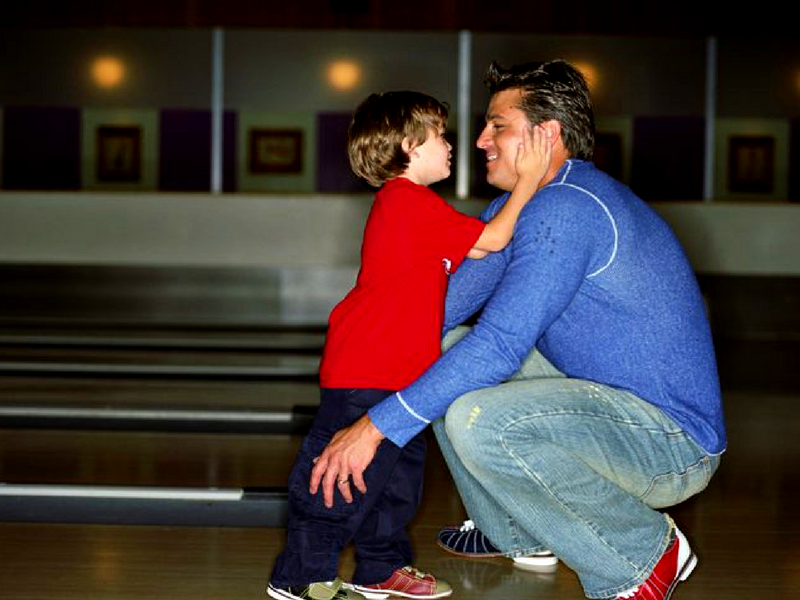Via Livestrong.com: How to Teach Bowling to Kids
Bowling is an activity that can keep the family entertained, especially on a rainy day or when winter nights chill the air. In addition, it’s a social activity for many teens. Teaching your kids how to bowl gives them a chance to enjoy some fun with you and friends, as well as gain some insight into the basic physics involved in the sport. With the advent of automated scoring, you can focus your attention on your kids and having a good time, rather than trying to calculate the correct score, making it a relaxing activity for all.
Step 1
Explain the rules of bowling. Each player tries to knock down 10 pins, typically using two tosses back-to-back. If you knock them over the first time, it’s a strike. If you combine to knock them all over with both tosses, or knock down all 10 with your second toss, it’s counted as a spare. If you don’t knock all of the pins down, you get a point for each one you do knock down. You get 10 turns, or frames, to bowl a full game.
Step 2
Prepare the kids for the noise of the bowling alley. Between the music, pins knocking together and balls rolling, bowling alleys can be quite noisy and scary for younger children. Let the kids know that it might be a bit loud at first but they’ll soon get used to it.
Step 3
Get the right weight of ball for your child. Younger kids need lighter balls of between 6 and 10 lbs. These are sometimes kept behind the service counter. Inquire with the desk about whether they store balls separately if you can’t find one for your child.
Step 4
Bring socks. If your kids don’t have socks on, they can’t typically use the bowling shoes provided by the alley operators. Make sure your kids either have socks on or have socks with them.
Step 5
Request that the bumpers be put into place. Most alleys have automatic bumpers, though some alleys need to lay the bumpers manually on either side of the lane. Bumpers prevent the ball from going into the gutters, ensuring that your child gets some points each time he bowls. This helps kids feel successful and minimizes frustration.
Step 6
Demonstrate a correct bowling technique. Point out the arrows, but don’t force your child to have perfect form from the start. Younger kids are likely to use the two-handed bend-and-throw, which is common among starting bowlers. Older kids might have an interest in learning how to use proper technique.
Step 7
Require your children to follow bowling etiquette, such as yielding to the player on the right to ensure he can bowl first if you both are ready at the same time. Reinforcing the importance of good manners is a critical lesson for kids, regardless of the sport involved.
Warnings
Don’t focus too much on scoring; older kids can watch the automatic system to gain a sense of how scores are tabulated, but younger kids will quickly lose interest.



